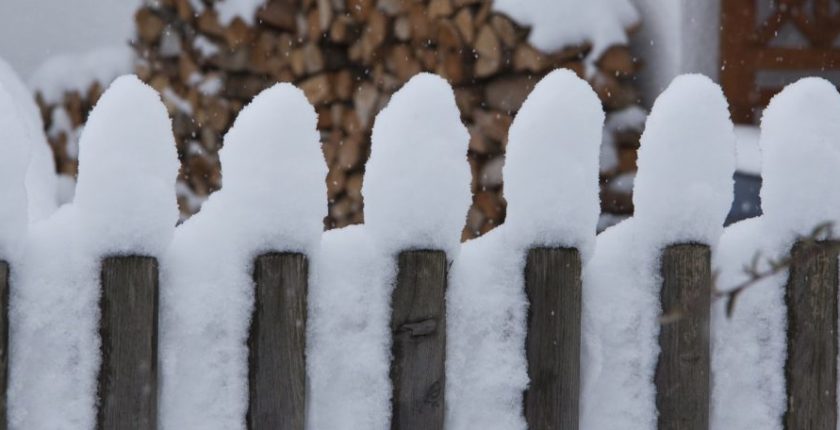9 Tips to Protect Your Wood Fence from Winter Weather
9 Tips to Protect Your Wood Fence from Winter Weather
Don’t let winter ruin your fence
New Englanders may look forward to December if they enjoy parties, sledding and hot chocolate. Unfortunately, winter also brings problems like icy driveways and fence damage. This season’s weather could cause your fences to crack, rot or even fall over. To protect your fence from winter weather, please follow these tips:
Falling Limbs
1. Trim tree branches to prevent them from hitting fences. Snow and ice may increase the likelihood that limbs will break and fall. Most wooden fence repairs cost about $300 to $800, according to HomeAdvisor.
Managing Snow
2. Don’t push heavy piles of snow against the side of your fence. If powerful winds produce drifting, you’ll need to shovel it farther away. Wet snow has a greater potential to damage fencing.
3. When frozen precipitation accumulates on a fence, carefully remove it with a broom. Avoid using a shovel; it can scrape off paint, especially if the edge of the tool is made of metal. Exercise caution when you clear any surfaces near the fence.
4. Do you pay someone to clear your driveway? If so, ask the plow driver not to create piles of snow that push against a fence. However, it’s more important to avoid putting snow in locations that force water to enter your home or business as melting occurs.
Preventing Accidents
5. If a fence stands near a street or driveway, attach reflectors to it. Motorists may have difficulty seeing white or beige structures in a snowstorm. Likewise, dark-colored wood becomes hard to see during long winter nights.
Slowing Wood Decay
6. Carefully inspect your fencing as autumn comes to an end. You can repair cracks and holes with wood filler. If a board has rotted or suffered a major insect invasion, replace it before the damage spreads to other parts of your fence.
7. Take the time to remove tree debris from all surfaces. Wet leaves and pine cones can cause wood to begin rotting. This is another reason to trim any bushes or trees near your fencing.
8. Pour small amounts of water on various parts of the wood. Your fence still resists moisture if droplets stay on the surface. When boards absorb water, it means that they need a new coat of waterproof paint or stain. Remember to clean wood with a power washer before coating it.
Shifting Soil
9. Winter conditions may cause soil to move around. Fence posts will shift noticeably if they weren’t installed correctly. Always ensure that workers place new posts a minimum of 36 inches beneath the ground. It’s difficult but possible to fix this problem after installation.

